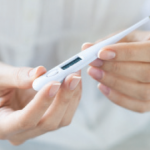“Doctor,” Mrs. Morse’s mother points a bony finger at my nose. “Hayden does have lupus. She has that ANA and everything else. We know all about the symptoms, and what’s more, she has those reactions in her blood to the silicone. I’ve seen the tests. Now exactly what is the problem? I’m sick and tired of doctors putting her down. Now, are you going to sign off on the settlement or not?”
I am not a psychiatrist, but I know when I am in the presence of significant mental illness, and I am not about to be bullied. I focus on Mrs. Morse, who remains seated on the exam table. “Mrs. Morse, I’ll go over your chart to see if I’m missing anything, and if I am, I’ll be in touch with you, but from the information I have, you don’t have lupus or another immune system disorder. So I can’t sign the settlement form saying you have lupus. I’m sorry, but I can’t.”
Mrs. Morse stiffens, then begins to sob uncontrollably. “I knew it. I knew it. You think I’m making all of this up. Well, it’s real, and I hope someday you realize how wrong you are. I am sick from the silicone. Sick. And it’s already too late. The silicone, it’s poisoning me,” she brushes her hair back and dabs her eyes with the Kleenex I hand her. “It’s everywhere. Everywhere.”
I never saw Hayden Morse again, but her mother wrote me a letter threatening to report me to the Maine Board of Medicine. She never did. I don’t know if the Louisiana law firm that sent Hayden Morse to my office sought a second or third opinion, but it was common knowledge at the time that certain rheumatologists believed silicone breast implants caused autoimmune disease and interpreted the evidence more favorably. Perhaps, she was eventually reimbursed for her suffering.
Continuing Saga
The question in the early years of the silicone breast implant controversy was not whether some women with breast implants had autoimmune diseases, such as lupus or scleroderma, but whether this was happening more commonly than one would expect by chance alone. And the answer to this key question took time to definitively answer. By one estimate, by the mid-1990s, more than a million women had undergone the procedure in the U.S., but the actual number remains unknown because no central registry existed to provide firm numbers.
